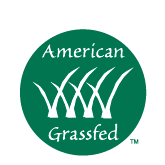Beef Cuts Guide
Have you ever stood in the meat aisle at the supermarket, wondering about the difference in the various cuts of beef?
You are not alone. In fact, some people may prove reluctant to try different cuts of beef because they aren’t sure exactly how to use them or what they taste like. When you order 100% grass fed beef from Thousand Hills Lifetime Grazed, you may already have some idea about beef cuts. Here is a guide to beef cuts to help you have an even better understanding as a consumer and cook.
Learning about beef cuts helps you make more informed cooking and eating choices. Not only will you know where each cut of meat comes from, but you will understand why some cuts are more tender than others. You can order the right cut for the meals you want to make.

What Are the Cuts of Beef?
There are eight primal cuts of beef, along with numerous sub-primal cuts. While the eight primal cuts are standard, the names of sub-cuts may vary depending on region and even the individual butcher. Food service cuts may differ from that of butcher cuts.
The Secondary & Sub Primal Cuts
This refers to the more familiar cut names you would actually purchase from the store, such as a prime rib. It’s helpful to understand where these sub primal cuts come from to better understand why some cuts are more or less tender than others. We discuss the more familiar secondary & sub-primal beef cuts for each primal cut.
Below is a comprehensive beef cuts guide that should answer any questions you have about individual cuts.
Chuck Cut
The Chuck is a shoulder and neck cut. Because the shoulder is an area in constant movement, the meat is tougher, but it is flavorful. It is a less expensive cut, so a good choice for cost-conscious customers. Marinating is often recommended. In addition to Grassfed Beef Chuck Roast, it is commonly used in Grass Fed Ground Beef and Grass Fed Beef Roasts and Stews. Other common chuck cuts include:
- Boneless shoulder pot roast
- Chuck eye
- Chuck roll
- Chuck steak
- Chuck tender
- Country style ribs
- Denver steak
- Flat iron steak
- Ranch steak
- Shoulder tender medallions
- Shoulder top blade steak
There’s a chuck cut for every type of cooking.
Rib Cut
As the shoulder moves into the ribcage, so does the chuck cut move into the ribs cut. While cattle have 13 pairs of ribs, the first five pairs are chuck cuts. That 13th rib is considered part of the loin. Those in between are rib cuts, and include:
- Back ribs
- Grass Fed Beef Ribeye
- Prime rib
- Ribeye cap steak
- Ribeye roast
Because rib meat is usually fattier, roasting and slow cooking are recommended for many cuts. That’s not the case with steaks, though, as they taste better grilled or fried.





Loin Cut
The most expensive cuts of beef come from the loin, located right behind the ribs at the top of the body. These cuts are costly because they are so tender. In fact, that is the name of one sub cut. There are two parts to the loin – short loin and sirloin. Short loin steak cuts include:
- Filet Mignon
- Grass Fed Beef Steaks
- New York Strip Steak
- Porterhouse
- Strip
- T-bone
- Tenderloin Beef Filet
Most loin cuts are best grilled or fried. High heat is usually the way to go. Sirloin cuts are slightly less tender, but boast more flavor. These sub-cuts include:
- Ball tip steak
- Bottom sirloin
- Center cut sirloin
- Coulotte roast
- Coulotte steak
- Grass Fed Sirloin Steaks
- Top cut sirloin
- Tri tip roast
- Tri tip steak
Along with grilling, sirloin cuts do well in skillets. They are a good stir-fry choice.
Round Cut
The Round Beef Cut refers to the meat from the rump, thigh and rear legs. It is inexpensive, but also tough. Ground round is often used for hamburger. Other types of round cuts include:
- Bottom round roast
- Butterfly top steak
- Eye of round
- Rump roast
- Tip roast
- Tip steak
- Top Round Beef Steak
Flank Cut
Located below the loin, the flank cut does not contain bones. Although tough, it is flavorful albeit chewy. Because it is a lean cut, flank is becoming more in demand as customers turn away from fattier cuts.
Flank cuts include flank steak and London broil. It’s also popular for ground beef.
Plate Cut
Also known as the short plate, plate sub-cuts come from the animal’s lower area, between the brisket and flank. Plate cuts include:
- Cubed steak
- Hanger steak – also known as butcher’s steak
- Inside Skirt Steak
- Outside skirt steak
- Short ribs
Short ribs require slow-cooking, but the steaks are best grilled or fried.
Brisket Cut
The Brisket Cut is chest meat. Divided by a layer of fat, it is used for corned beef and pastrami. Because brisket meat fibers are long, slow cooking is necessary. Grass Fed Beef Brisket cuts include:
- Brisket flat
- Brisket point
- Whole brisket
Think “slow and low” when cooking brisket. Make sure the meat does not become too dry. Brisket is also a good choice for barbecue.
Shank Cut
As part of the legs, the shank meat cut tends towards toughness. These are lean cuts, but they do require considerable cooking time. Shanks cuts and uses include:
- Lean ground beef
- Shank cross-cut
- Soups
- Stews
Other Beef Parts
Besides the cuts, there are other parts of the animal that are both nutritious and tasty. These include the cheeks, heart and liver. The marrow bones and oxtail provide opportunities to create interesting and inexpensive dishes. Grass Fed beef bone broth contains many nutrients and can be utilized in a massive variety of dishes. At Thousand Hills Lifetime Grazed, no part of the animal goes to waste.
Grass-Fed, Grass Finished Beef by the Cut
All of our cattle at Thousand Hills Lifetime Grazed are raised naturally, consuming only grass or forage for their entire lives. They receive no antibiotics, hormones, or grains. The proof is always in the eating.
Order top quality, sustainably produced meat raised in a holistic, environmentally-friendly manner today.
























